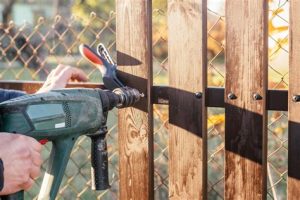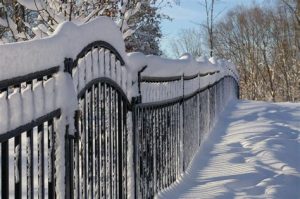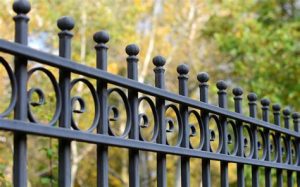Discover essential tips for choosing and installing your fence, covering local regulations, materials, neighbor interactions, aesthetics, and safety measures for your property.Installing a fence can enhance your property’s privacy, security, and aesthetic appeal, but it’s crucial to navigate the process thoughtfully. Community guidelines play a vital role in this journey, ensuring that your fence not only meets your needs but also adheres to local regulations and maintains neighborhood harmony. From understanding the legal requirements that govern fence installation to selecting the right materials that align with your vision, every step matters. Additionally, considering interactions with neighbors and the implications for property value will help ensure a smooth project. Finally, proper installation and adherence to safety measures are paramount to creating a structure that is both beautiful and functional. In this blog post, we will explore these key aspects to help you successfully install your fence while fostering good relations within your community.
Understanding Local Regulations
When it comes to installing a fence, one of the most critical steps is understanding local regulations. These regulations can dictate various aspects of your fence project, including its height, design, and placement. Different municipalities have unique rules, so it’s essential to check what applies in your area.
Most cities require homeowners to obtain a building permit before erecting a fence. This process usually involves submitting a plan that details the proposed fence’s dimensions and materials. In addition, there may be zoning regulations that specify how far your fence must be from property lines. Failure to adhere to these regulations can result in fines or the need to remove or alter your fence post-installation.
Another aspect to consider is whether your property is part of a homeowners association (HOA). Many HOAs have their own set of rules regarding fencing that may be even stricter than local regulations. Before moving forward with your fence, ensure that you obtain any necessary approvals from your HOA to avoid future complications.
Selecting the Right Fence Material
When it comes to installing a fence, selecting the right fence material is crucial. This decision impacts not only the overall aesthetics of your property but also its durability and maintenance requirements.
- Wood: Offers a classic and natural look, but requires regular maintenance to prevent rot and pests.
- Vinyl: Low maintenance and available in various styles. It is resistant to fading, rot, and insects.
- Chain Link: Affordable and durable, but may not provide the privacy that some homeowners desire.
- Aluminum: Lightweight and resistant to rust, it provides a modern look while allowing visibility.
- Composite: Made from recycled materials, this option combines the look of wood with much less maintenance.
Each material has its own set of advantages and disadvantages. For example, while wood provides warmth and character, it also requires periodic staining or painting. On the other hand, vinyl can stand the test of time without much effort, but it can be more expensive upfront.
Additionally, you should consider your unique environment and the purpose of your fence. For instance, if you are in a coastal area, certain metals may rust more quickly due to salty air. Understanding these factors helps ensure that your choice aligns with your long-term needs.
Finally, always check with your local regulations or community guidelines to confirm that your preferred material meets any zoning laws or restrictions. This foresight can save you time and money in the long run.
Considering Neighbor Interactions
When installing a fence, one important aspect to consider is your neighbor interactions. Fences can significantly affect the relationship with your neighbors, as they redefine the boundaries of your properties. It’s crucial to engage in open communication to ensure mutual understanding and to avoid potential disputes.
Start by discussing your plans with your neighbors before erecting a fence. This not only shows respect for their concerns but may also lead to helpful suggestions. Make sure to inform them about the type of fence you intend to install, including its height, material, and design.
- Height and Visibility: Ensure the height won’t block views or sunlight.
- Style: Overly tall or opaque designs might be perceived as aggressive.
- Property Lines: Confirm that the fence will be placed within your property boundaries.
By involving your neighbors in the conversation, you not only foster goodwill but also minimize the chances of future conflicts.
Maintaining Aesthetics and Property Value
When it comes to installing a fence, one of the most important considerations is maintaining aesthetics and ensuring that your property value remains intact. An attractive fence can enhance the overall appearance of your home, while a poorly designed one can detract from it. Therefore, choosing the right design and material is crucial.
Moreover, you should take into account the architectural style of your home and the surrounding environment. This involves selecting a fence that complements your home’s design and adds to the visual appeal of your neighborhood. For instance, a contemporary home might benefit from sleek, modern fencing materials, while a more traditional property could look stunning with wooden picket fencing.
It’s also vital to consider how your fence will effect property value. If you’re planning to sell your home in the future, it’s essential to choose a fence that is not only practical but also appealing to potential buyers. When selecting your fence, aim for high-quality materials and designs that can potentially increase curb appeal and overall property value.
Ensuring Proper Installation and Safety Measures
When installing a fence, it’s crucial to ensure proper installation and safety measures are in place. A well-installed fence not only enhances the aesthetic appeal of your property but also serves its intended purpose effectively.
Before commencing installation, make sure to check local regulations regarding fence height, materials, and distance from property lines. This step ensures that your fence complies with community guidelines, preventing potential disputes with neighbors or fines from local authorities.
It’s also important to consider safety aspects such as using the right tools and taking necessary precautions during installation. For example, digging holes for fence posts can be dangerous if not done carefully. Always wear appropriate safety gear, and consider enlisting the help of a professional if you’re unsure about any aspect of the installation process.
| Safety Consideration | Details |
|---|---|
| Check Underground Utilities | Always contact local utility companies to mark underground lines before digging. |
| Use Appropriate Tools | Employ the right tools for each task to minimize the risk of injury. |
| Wear Protective Gear | Safety goggles, gloves, and sturdy footwear are essential during installation. |
Frequently Asked Questions
What are the key factors to consider before installing a fence?
Key factors include local zoning laws, property lines, the purpose of the fence, materials, and aesthetic preferences.
Do I need a permit to install a fence?
Yes, most municipalities require a permit for fence installation to ensure compliance with local regulations. It’s essential to check with your local government.
How do I determine the property lines for fence installation?
Property lines can be determined using a survey, property deed, or tax map. In some cases, it’s advisable to hire a professional surveyor.
What are the common materials used for fences?
Common materials include wood, vinyl, chain link, metal, and composite materials. Each has its own benefits and drawbacks.
What are the neighborhood guidelines for fence height and design?
Neighborhood guidelines vary but often specify maximum heights and certain materials or designs. Homeowners should consult their homeowners’ association or local regulations.
What are the potential impacts on neighboring properties?
Installing a fence can affect light, views, and property lines, so it’s courteous to discuss plans with neighbors before proceeding.
How can I maintain my fence to ensure its longevity?
Regular maintenance includes cleaning, painting or staining wood fences, checking for rust on metal structures, and ensuring no vegetation is damaging the fence.





